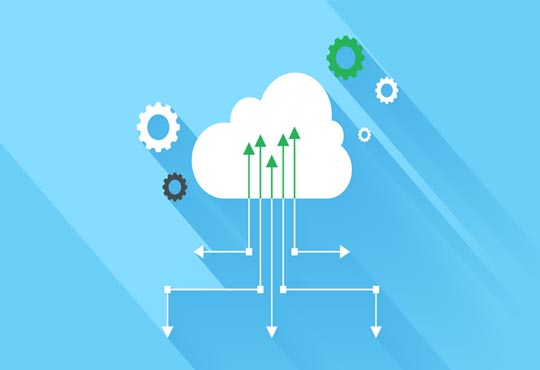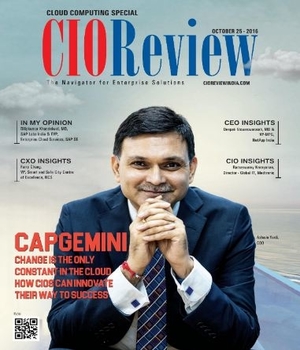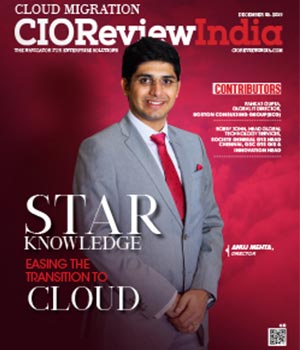
Four Multi-Cloud Trends To Look At For Better Business Outcome
CIOReviewIndia Team | Wednesday, 22 January 2020, 13:59 IST
 Driven by the need to optimize ROI, businesses are resorting to multi-cloud strategy that helps them leverage the best-of-breed cloud technologies. According to a report by MarketsandMarkets, the global multi-cloud management market is projected to become USD 4,492.7 million by the end of 2022, growing at a CAGR of 30.9 percent till 2022. Increased business agility and avoidance of vendor lock-ins are some of the factors contributing to the market growth, says the report. “As the first wave of public cloud (IaaS) adoption is maturing, organizations are realizing that they do not want to become overly dependent on a single cloud provider, and also that on an ongoing basis there are varying degrees of efficiency that can be achieved by utilizing multiple cloud vendors and shifting workloads as necessary. Hence, multi-cloud has become a strategic initiative for many enterprises, both large and small,” opines Amir Jerbi, Co-Founder and CTO, Aqua Security. As multi-cloud business strategies are gaining traction disrupting the existing cloud environments, let us have a look at some of the multi-cloud trends:
Driven by the need to optimize ROI, businesses are resorting to multi-cloud strategy that helps them leverage the best-of-breed cloud technologies. According to a report by MarketsandMarkets, the global multi-cloud management market is projected to become USD 4,492.7 million by the end of 2022, growing at a CAGR of 30.9 percent till 2022. Increased business agility and avoidance of vendor lock-ins are some of the factors contributing to the market growth, says the report. “As the first wave of public cloud (IaaS) adoption is maturing, organizations are realizing that they do not want to become overly dependent on a single cloud provider, and also that on an ongoing basis there are varying degrees of efficiency that can be achieved by utilizing multiple cloud vendors and shifting workloads as necessary. Hence, multi-cloud has become a strategic initiative for many enterprises, both large and small,” opines Amir Jerbi, Co-Founder and CTO, Aqua Security. As multi-cloud business strategies are gaining traction disrupting the existing cloud environments, let us have a look at some of the multi-cloud trends:
Interoperability- A Key Requirement
With companies relying on two or more cloud services provides, achieving better interoperability by integrating multiple cloud services is no longer an option, but a necessity. Interestingly, this is also providing developers with new opportunities to create personalized and engaging applications. Ensuring interoperability among multiple cloud services also minimizes the need for large-scale operational management, enabling business agility with low infrastructure.
Enabling Responsive IoT solutions
As most of the IoT solutions are to be hosted on on-premise platforms to ensure proximity between the devices, multi-cloud proves to be the best platform. Multi-cloud also serves the purpose of IoT solutions that are deployed across multiple geographical locations, allowing businesses to be more responsive to regional customers.
API-first Approach with Micro-services
Micro-services in multi-cloud enable cloud independence along with better agility; but present application integration challenges. API-first design strategies in the application development helps to solve integration challenges.
Artificial Intelligence for Automated Multi-cloud Management
Machine learning is finding better use cases in the current in the business environment, as multi-cloud is taking central stage. One among many AI uses cases is, it helps to automate the complex multi-cloud management and ensure continuous integration deployment of applications across different cloud platforms.
CIO Viewpoint
Unlocking the Potential of Cloud and AI: A...
By Pratik Jain, Lead Business Analyst – Digital Transformation, ACS Global Tech Solutions
Importance of Zero-Trust Cloud Security in the...
By Sameer Danave, Senior Director Marketing, MSys Technologies
The Transition to a Cloud-First World
By Kapil Makhija, Vice President -Technology Cloud, Oracle India
CXO Insights
Balancing Generative AI Capabilities with Data...
By Murad Wagh, Director - Sales Engineering, Snowflake
AI Integration in Multi-Cloud and Edge...
By FaizShakir, VP & Managing Director – Sales, Nutanix
The Role of Hybrid Cloud in ERP Integration







.jpg)
.jpg)
.jpg)

.jpg)
.jpg)
.jpg)

.jpg)

.jpg)




